Effective overmoulding of electronics
Mechanical protection combined with effective thermal management through boron nitride fillers
Thermoset injection moulding of electronic components combines mechanical protection with effective thermal management.
Whenever electronic components are to be encapsulated in a media-tight and gentle manner, and thermal management is required, Direct Injection Moulding (DIM) – the direct overmoulding of the component – is a target-oriented solution. By using epoxy moulding compounds and specifically selected fillers such as boron nitride, it’s possible to protect components in harsh environmental conditions.
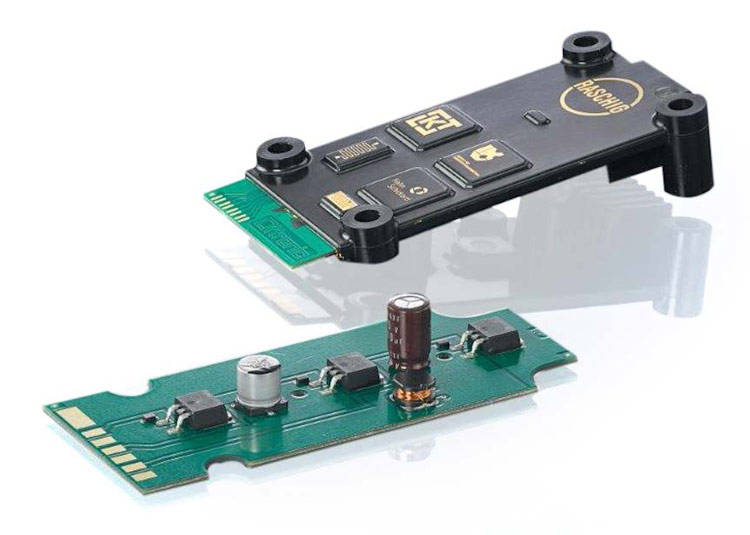
The more powerful electronic components become, the higher the requirements for effective heat management from the printed circuit board. Examples of this are devices from control boards, power tools, high-performance batteries and motors used in electric and hybrid vehicles.
From telephones to 5G internet, new components are being added to more and more products, requiring additional electronics - which in turn adds more heat. For polymer manufacturers, compounders and component producers, the challenge of thermal management has never been greater.
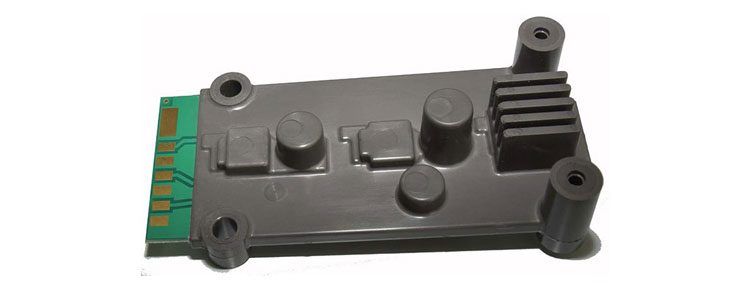
Overmoulding electronics in a gentle way
With their high temperature resistance, good chemical resistance, and the possibilities for hybridisation with other materials and substrates, thermoset moulding compounds based on epoxy resins (EP) offer numerous properties that enable innovative solutions for control boards and other electronic components. They allow gentle overmoulding of electronics at mould cavity pressures of only 10 to 15 bar and temperatures of up to 150 °C.
In this way, they create a reliable media seal that protects the sensitive electronics from the effects of liquids in a wide range of applications. Other significant advantages include the very good cost performance, the versatile function integration, the reduction of assembly steps and increased reliability. Requirements for robustness and lightweight construction are equally fulfilled, as optimised wall thicknesses contribute to weight. In addition, the packaging of the electronics increases protection against tampering.
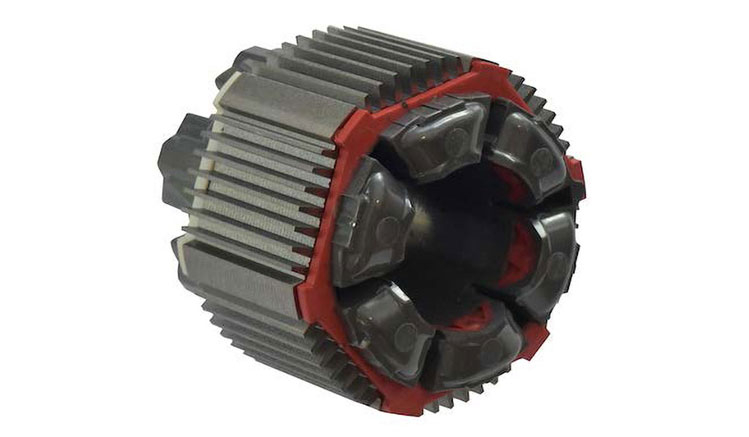
Displaying desired properties with fillers
Thermoset formulations can be adapted to meet specific requirements. To this end, companies in the special plastics segment such as Raschig GmbH already work closely with 3M in the development of new formulations, creating different compositions of fillers and reinforcing materials to meet these specific requirements. 3M uses the properties of boron nitride to produce lightweight ceramic fillers. They increase isotropic thermal conductivity while maintaining or improving electrical insulation. In addition, boron nitride as a filler can also help to make metallic heat sinks and additional insulating layers become superfluous, thus reducing the size, weight and system cost of components. Boron nitride is a material consisting of boron and nitrogen and is known for its thermal stability and excellent thermal conductivity.
Optimised thermal conductivity
Compared to known thermoplastics with a typical thermal conductivity of 0.2-0.3 W/m·K, standard EP moulding with 0.4-0.6 W/m·K already has twice as much thermal conductivity. Due to the preparation with thermally conductive fillers, the thermal conductivity of thermoset moulding compounds up to 10 W/m·K is possible. The compounds are electrically insulating and have an electrical dielectric strength of 40-60 KV/mm. The result is an encapsulation that’s highly chemically and thermally resistant and, for example, meets the typical requirements in the automotive segment such as the 85/85 test and application ranges from -50 °C to +200 °C.
Needs-based formulations for different applications
For applications involving the encapsulation of components, it means using the coefficient of linear expansion of the EP moulding compound to protect the materials and substrates to be encapsulated. In this respect, too, 3M Boron Nitride Cooling Fillers with their low coefficient of linear expansion offer sustainable advantages. The EP moulding compounds can therefore be produced in a weight-saving manner with a high filler content of 70 to 80 % by weight.
They’re used in a wide range of automotive, electrical and electronic devices. In medical technology, thermosetting moulding compounds are advantageous as they’re highly chemically resistant, but also autoclave-resistant and sterilisable. Applications include the control electronics in medical apparatus or equipment for dental surgery. Another field of application is modern lighting systems, which along with smaller electronics and LEDs require particularly effective thermal management.
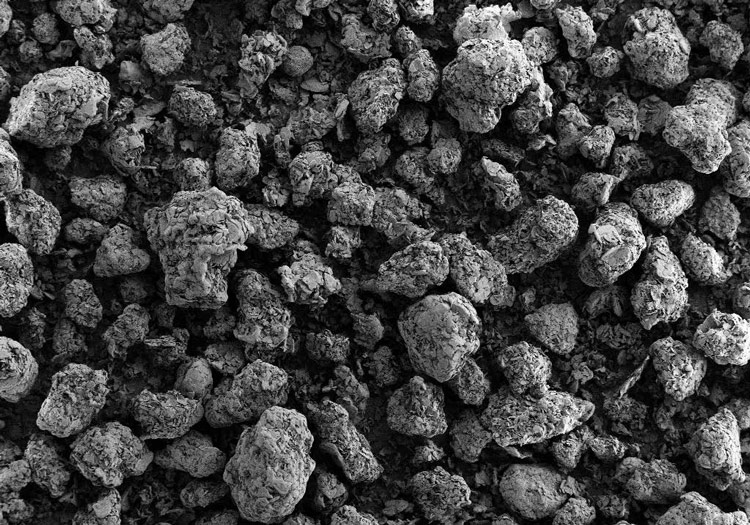
Material and manufacturing expertise from a single source
The decisive factor for a targeted DIM application for electronic components is the combination of material and manufacturing competence up to the individual shaping. Ideally, all parties should be involved at an early stage. In this way, further added value can be created with a view to functional integration.
Another advantage of a thermoset moulding compound is that plug contours can be moulded directly. Due to the material properties, it’s often possible to dispense with weight savings and screw bushings.
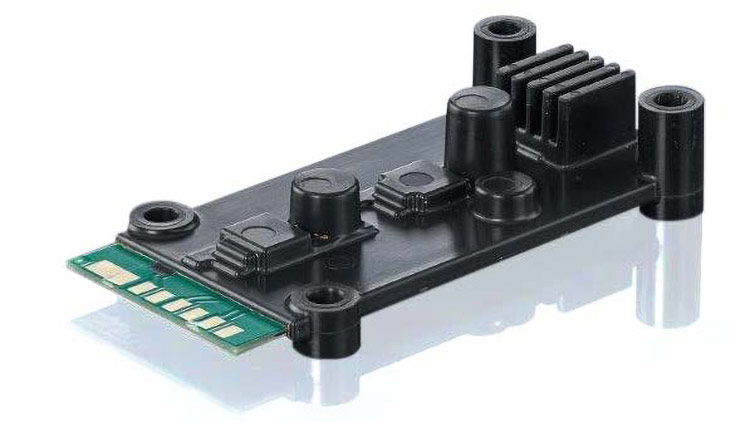
Conclusion: Overmoulding still has a lot of potential
The direct packaging of electronic components in thermosetting materials brings considerable benefits, from effective thermal management, cost performance and protection of electronics in harsh environments. The growing number of possible applications opens up new opportunities for plastics processors. The conversion of machines from thermoplastic to thermoset materials is possible with little effort. Almost all machine manufacturers offer options that allow the plasticising unit to be replaced in just a few hours. The encapsulation of electronics can thus demonstrate a wide range of advantages.
You can find detailed information here: RASCHIG Duroplaste – Duroplastische Formmmassen
More information about Boron Nitride and 3M Boron Nitride Cooling Fillers:
Boron Nitride material
3M Boron Nitride Cooling Fillers

